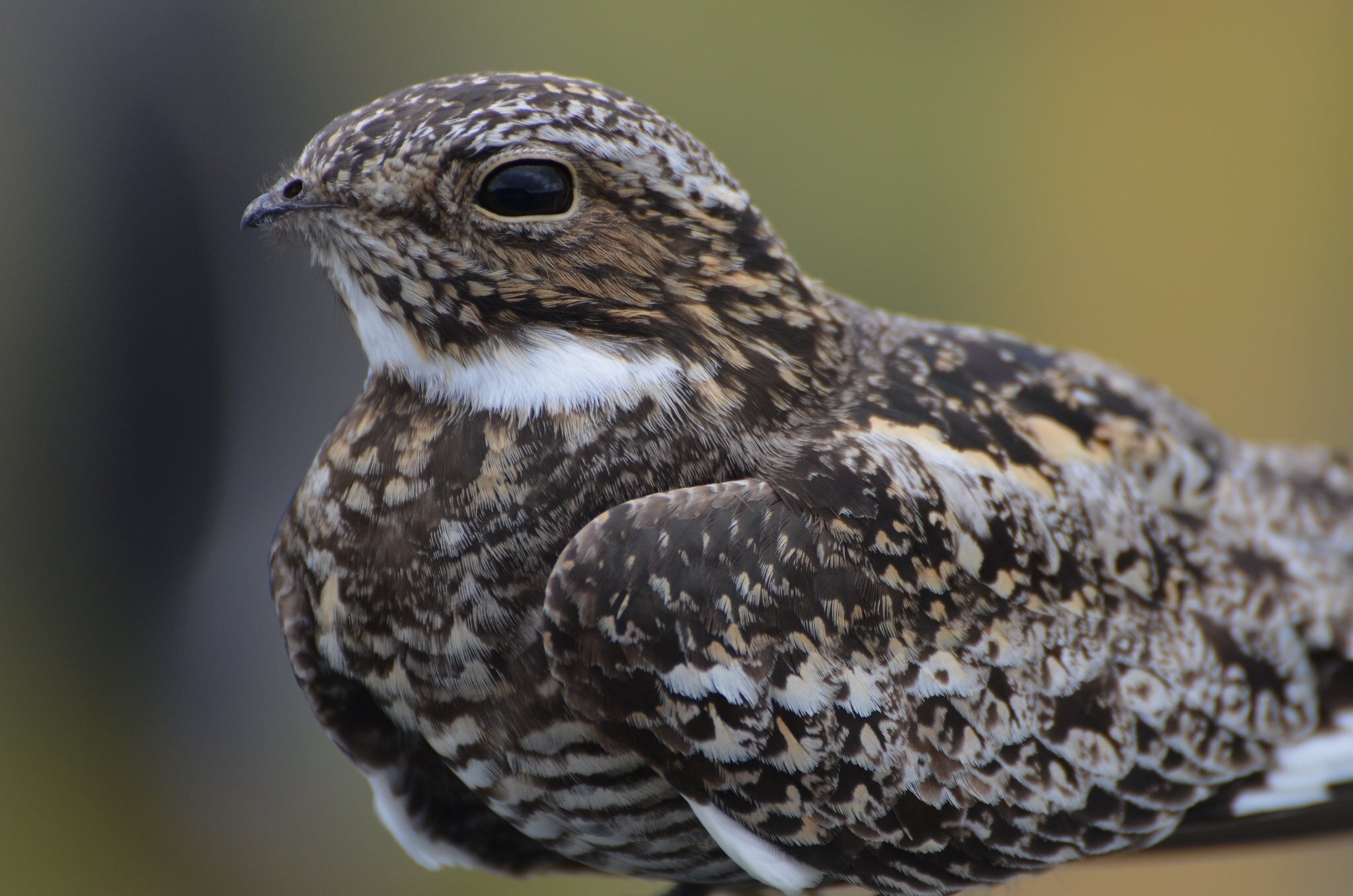Nighthawks for His Birthday: The 2020 Fall Migration of the Common Nighthawk
They cut the air into ribbons. They came at us one at a time. Then more came and were swooping and turning on a dime. This way and that. Tumbling over. They appeared to take control of the wind, using it to push insects toward their open mouths. Snacking and fueling up as they moved south, it was a sight to behold as their tiny beaks opened to reveal rather large mouths. Modified feathers around the base of the beak helped funnel insects into their mouths.
Photo by Trish Gussler
They come every year on Mark’s birthday. How they know his birth date is a mystery to us. We do not ask, and we do not need to know. But we always look forward to the last week in August when Mark has a birthday and the common nighthawks appear. They are in migration.
Just after supper and birthday cake at our cabin near Rio, we noticed nighthawks flying around our cabin with some coming within 30 feet of us! We decided to take a drive to look for more. Like birthday cake, we wanted seconds, maybe thirds! We were not disappointed. By dark we counted 24 nighthawks at the cabin and another 86 on our outing. It is interesting to note that nighthawks have tiny beaks but when opened, they display an impressively large mouth to catch flying insects..
According to Paul Smith, outdoor writer for the Milwaukee Journal Sentinel this has been a good year to observe fall nighthawk migration. Paul saw his first nighthawks 50 years ago and always looks forward to their fall migration. On August 24th he reported “It started as a trickle of three common nighthawks zig-zagging through the evening sky. Then Mother Nature opened the valve. Over the next hour it built into a feathered tsunami as more than 1,000 of the sleek, acrobatic birds bobbed and weaved over and through Wauwatosa... In 50 years, this was the most nighthawks I’d ever seen in one flight.”
Photo by Andy Reago & Chrissy McClarren
A number of bird watchers reported seeing good numbers of nighthawks on Wisbirdn. Some people noted that ring-billed gulls, common green darner dragonflies in fall migration, and common nighthawks were feeding on insects. Tom Erdman wrote, “I suspect that the gulls were also taking the flying ants along with Nighthawks and Dragonflies. Warm humid weather causes this phenomenon and the flying ants emerge and take off. We see this along Green Bay and one can find Ring-billed Gulls hawking insects everywhere. Both Nighthawks and Dragonflies have migrated steady down Green Bay enjoying these feasts. I’ve seen both Merlins and Peregrines take Dragonflies in flight and eat them on the wing. Migrating Broad-winged Hawks, even in high swarming kettles can be seen snatching insects on the wing using the same thermals.”
Hawk Ridge Bird Observatory observers counted over 29,000 nighthawks this fall moving down the northshore of Lake Superior.
Sam Robbins wrote in Wisconsin Birdlife (1991) that nighthawks are an abundant fall migrant. He wrote that Hoy wrote in 1853, “For two hours before dark, these birds formed one continuous flock moving south. They reminded me, by their vast numbers, of Passenger Pigeons.”
Other reports of large numbers of nighthawks included, “An estimated 18,000 migrated past the Cedar Grove Ornithological Station in Sheboygan County on 31 August, 1958 following a movement of 6,000 the previous day. On 20 August, 1963 Norman Stone pegged the flight of birds over Crex Meadows Wildlife Area in Burnett County at 10,000. Most witnesses have been content to record “thousands” or heavy migration” instead of estimating numbers.”
Photo by Kenneth Cole Schneider
According to the Cornell Lab of Ornithology, “Common Nighthawks eat flying insects almost exclusively. The Common Nighthawk hunts on the wing at dawn and dusk, opening its tiny beak to reveal a cavernous mouth well suited for snapping up flying insects. It often takes advantage of clouds of insects attracted to streetlamps, stadium lights, and other bright lights. Nighthawks eat queen ants, wasps, beetles, caddisflies, moths, bugs, mayflies, flies, crickets, grasshoppers, and other insects. They may also eat a small amount of vegetation. Though they forage in low light, they seem to locate prey by sight, possibly with the help of a structure in their eyes that reflects light back to the retina to improve their night vision. They occasionally forage during the day in stormy weather, but seem to never forage at night. Common Nighthawks may forage near the ground or water, or more than 500 feet into the sky.”
According to the North American Breeding Bird Survey the U.S. population of nighthawks has declined by about 2% per year between 1966 and 2104. Insect numbers have also decreased. Mark remembers filling gas and cleaning large numbers of insects off windshields at his father's gas station in the late 1950s and early 1960s. When was the last time you had to clean large numbers of insects from your vehicle’s windshield?
The fall nighthawk migration is history for 2020. We encourage you to look up between mid August and mid-September every fall to view these interesting birds.
Long-distance migrant. Common Nighthawks migrate at all hours of the day in large flocks, on one of the longest migration routes of any North American bird. Most travel over land through Mexico and Central America, although many do pass through Florida and Cuba, flying over the Gulf to reach their wintering grounds in southern South America. Common Nighthawks are among the last migrants to return to their breeding grounds in spring. Map provided by Cornell Lab of Ornithology
Written by Susan Foote-Martin and Mark Martin, resident managers Goose Pond Sanctuary








